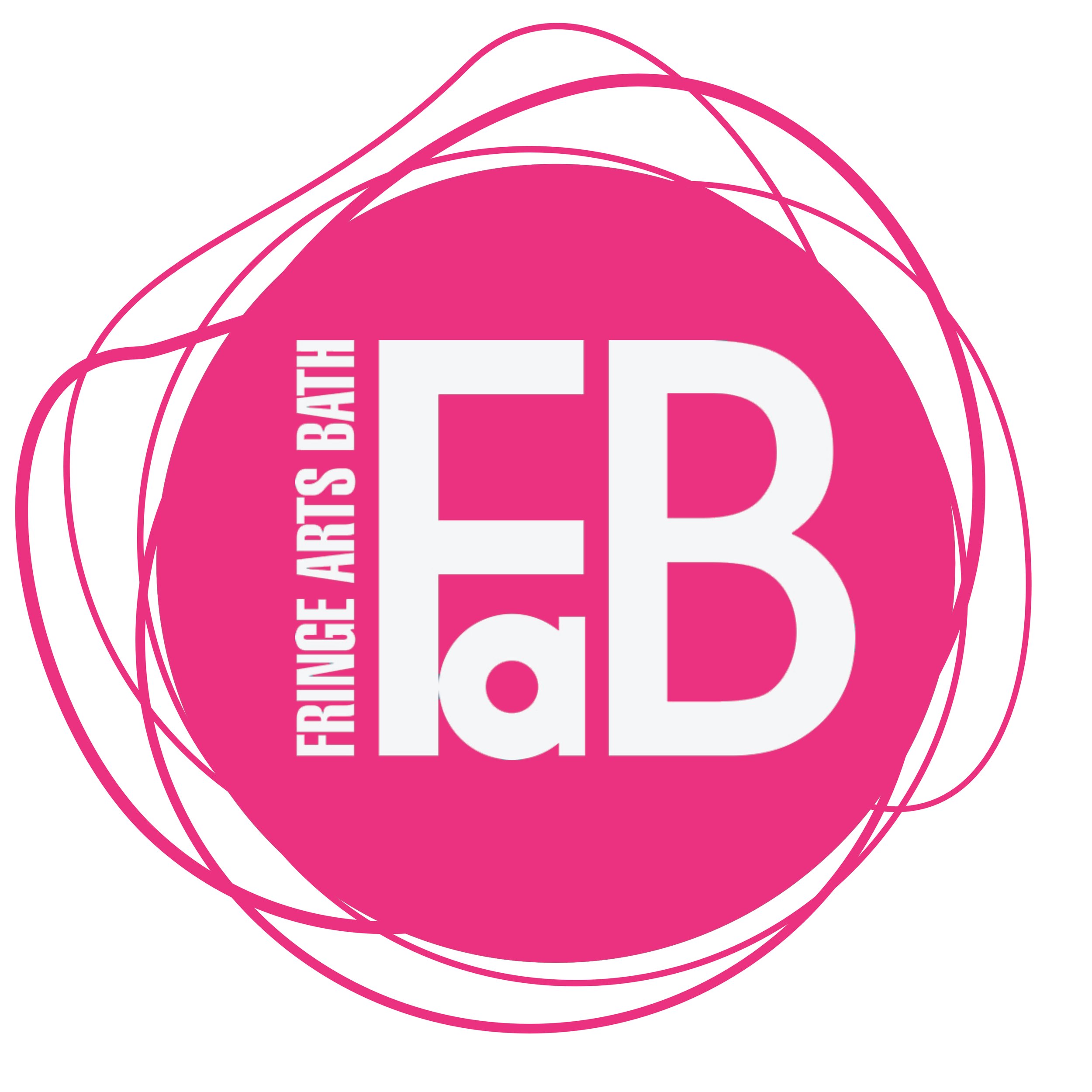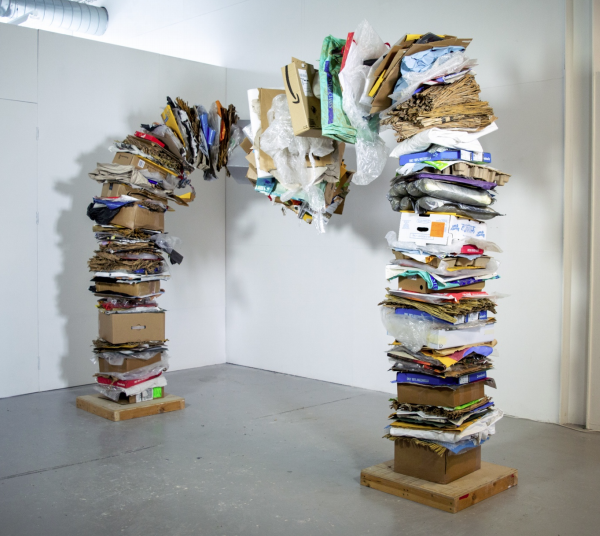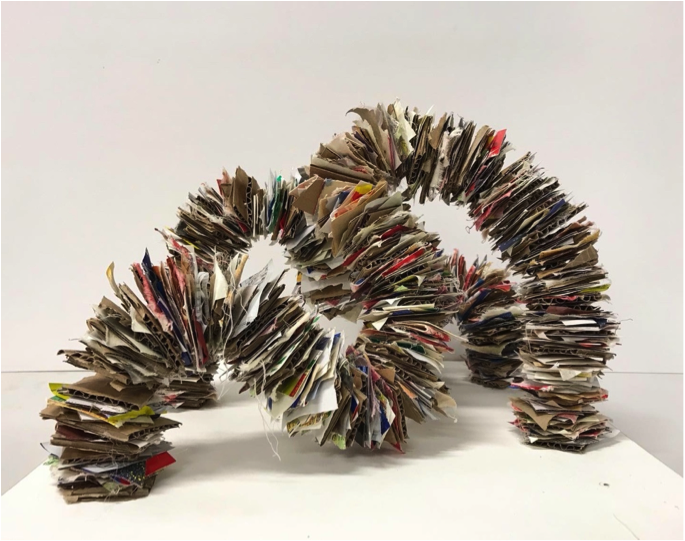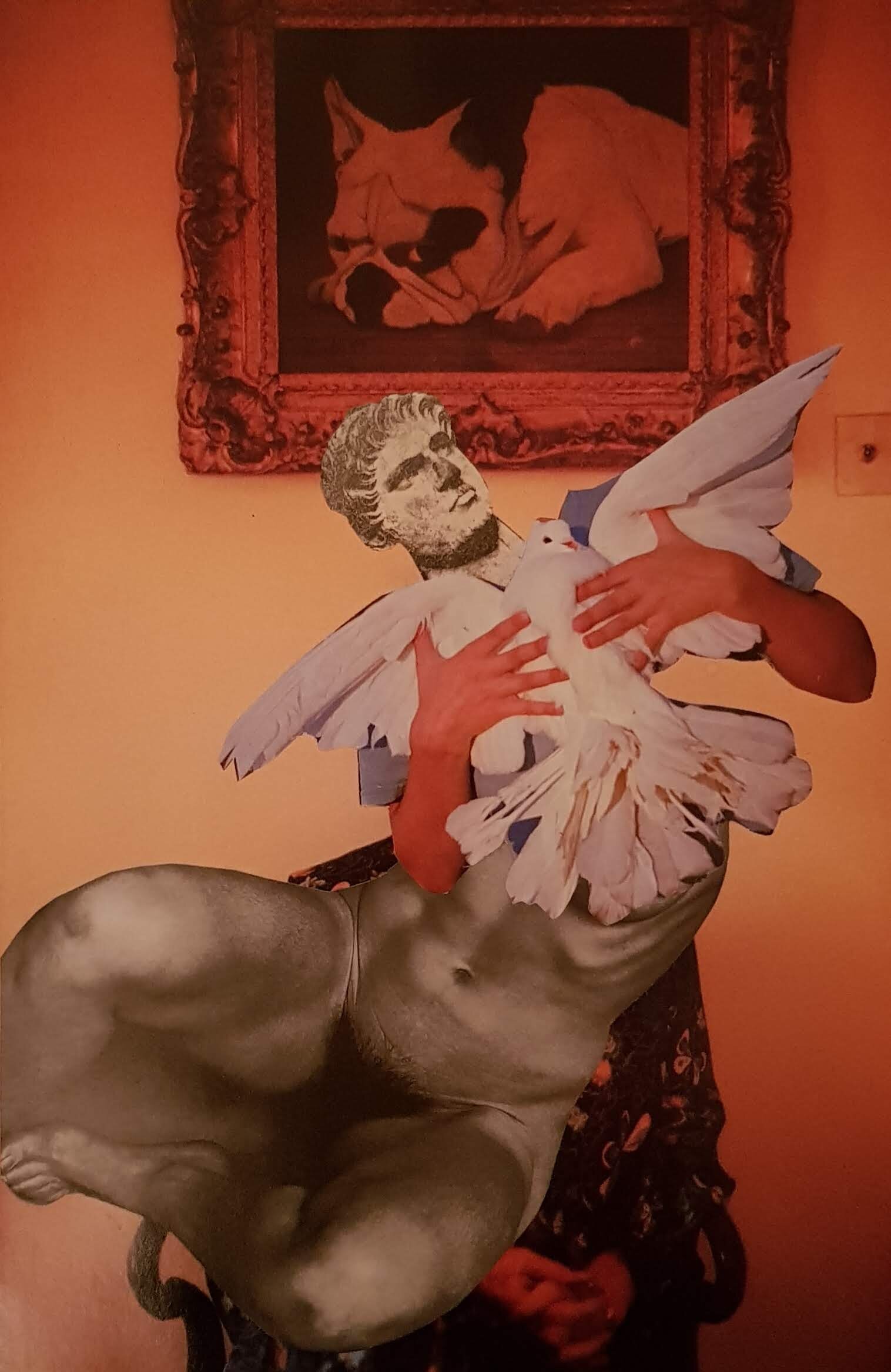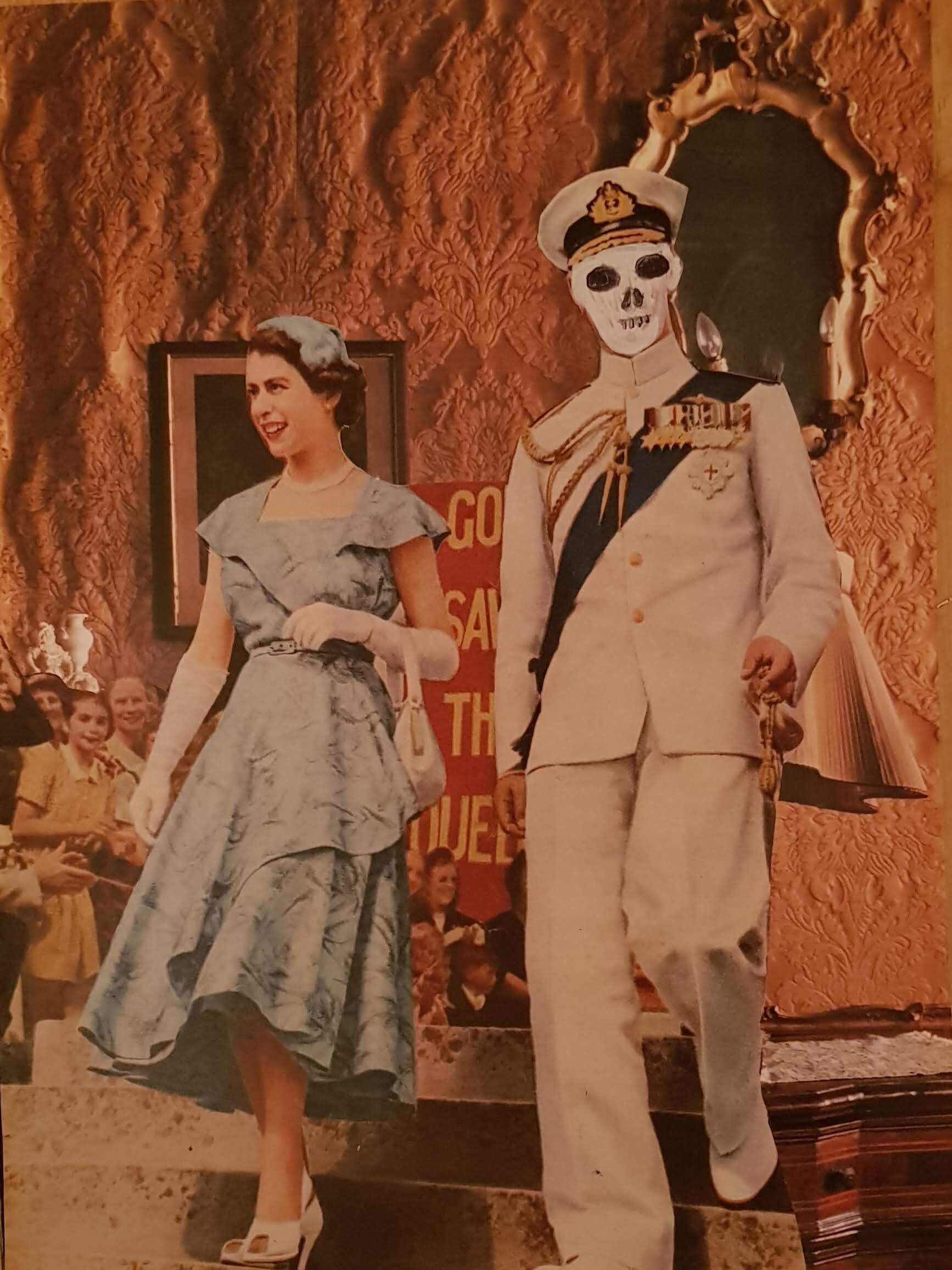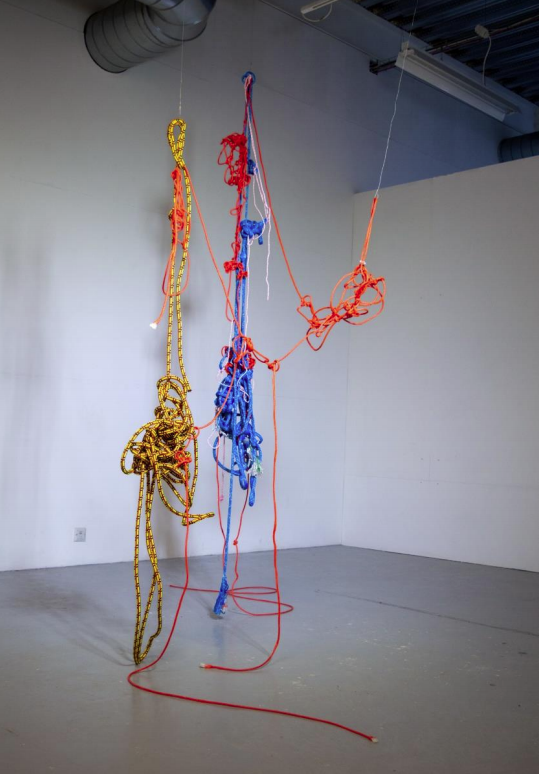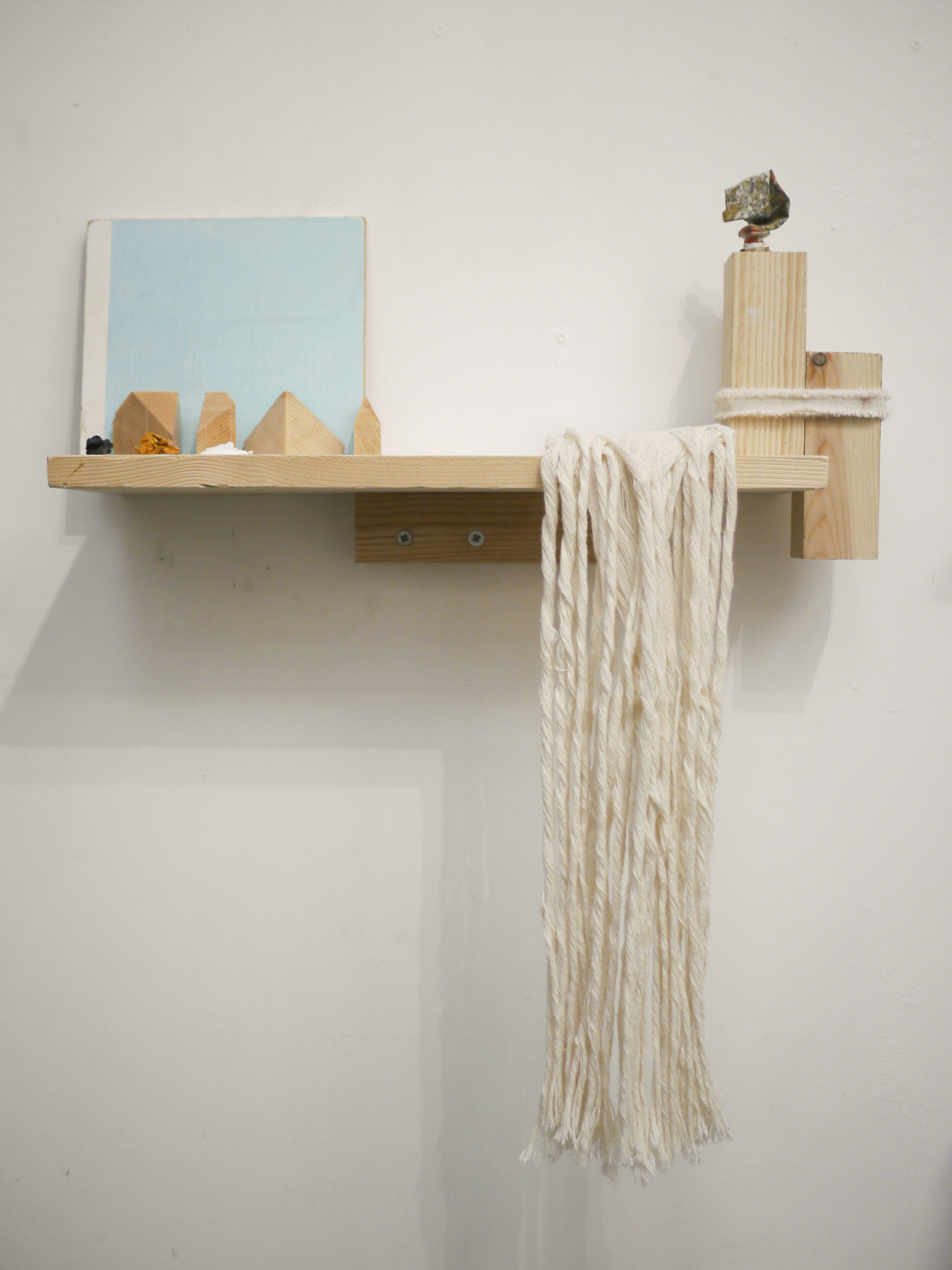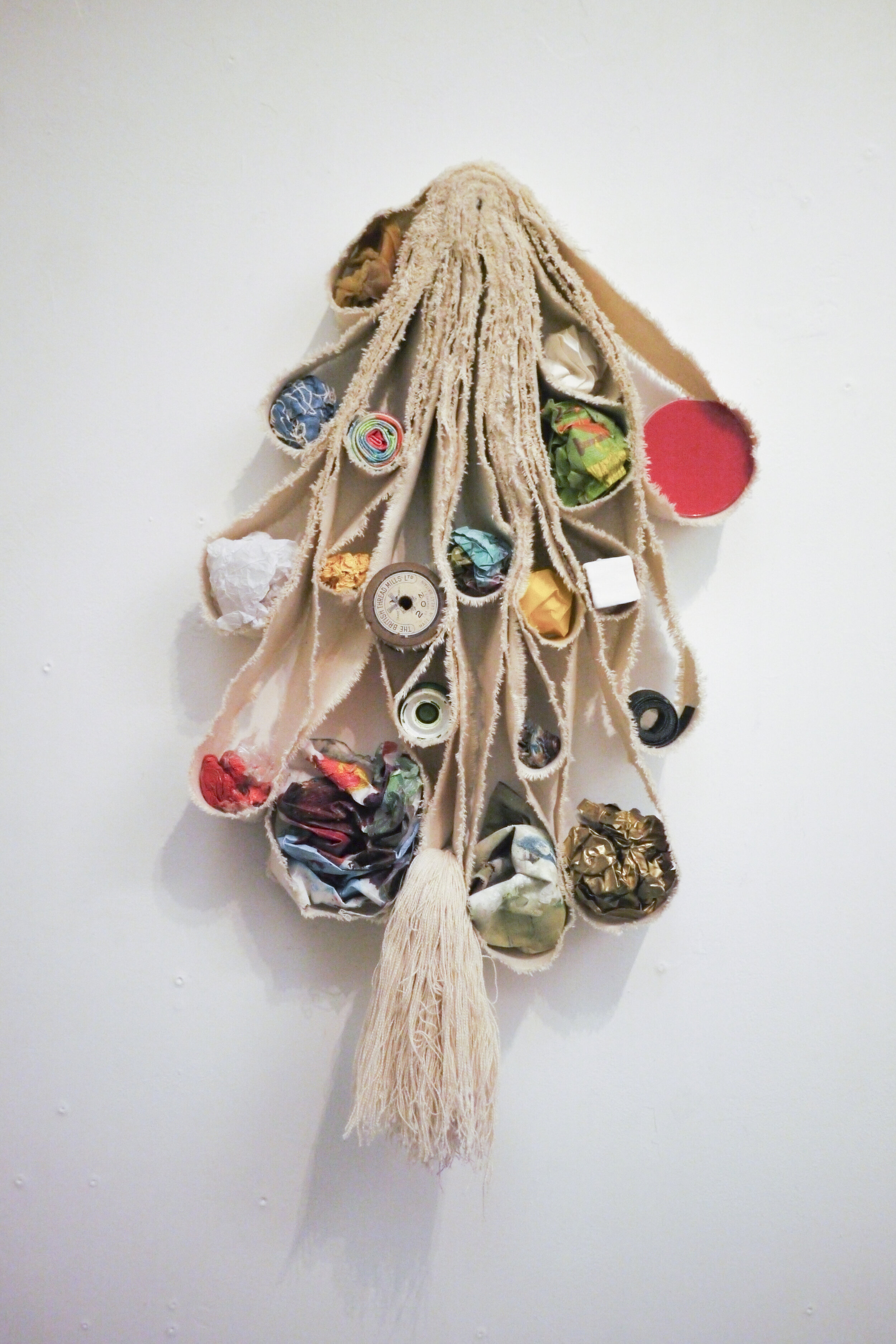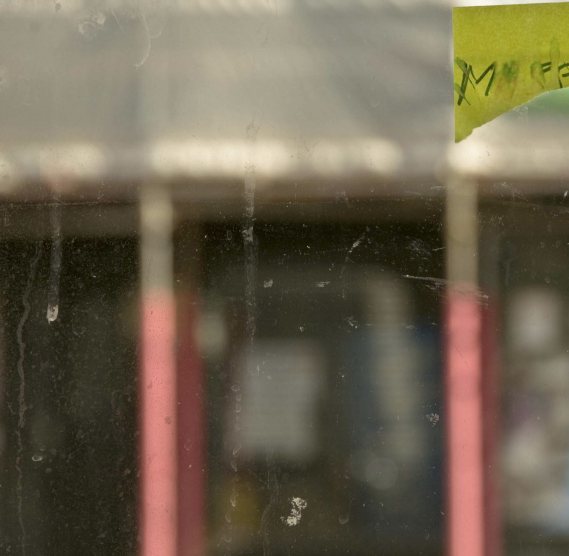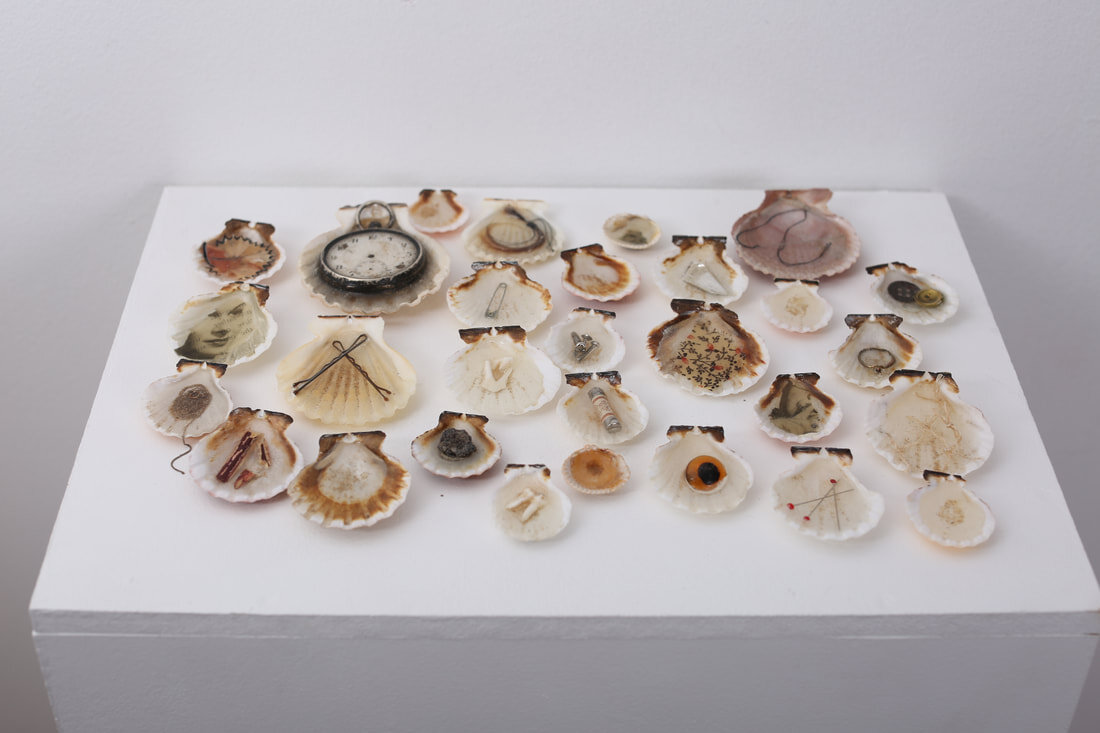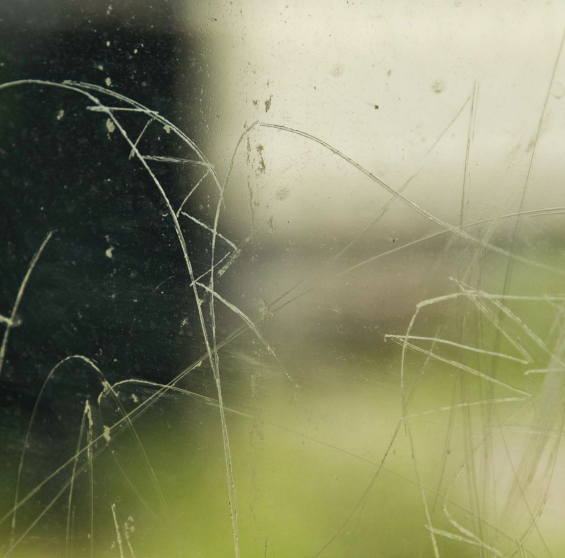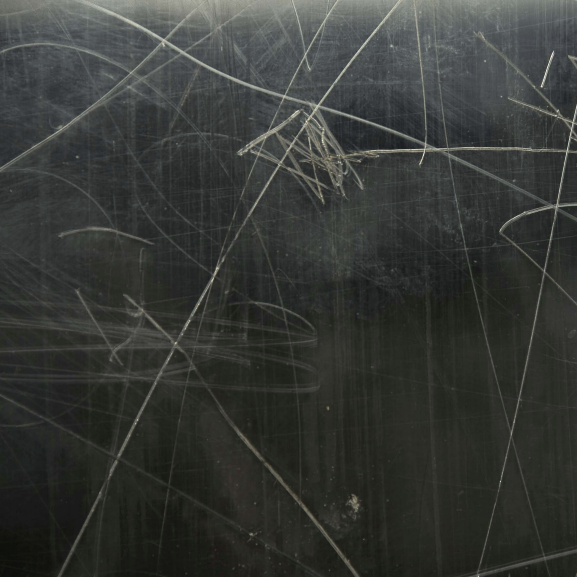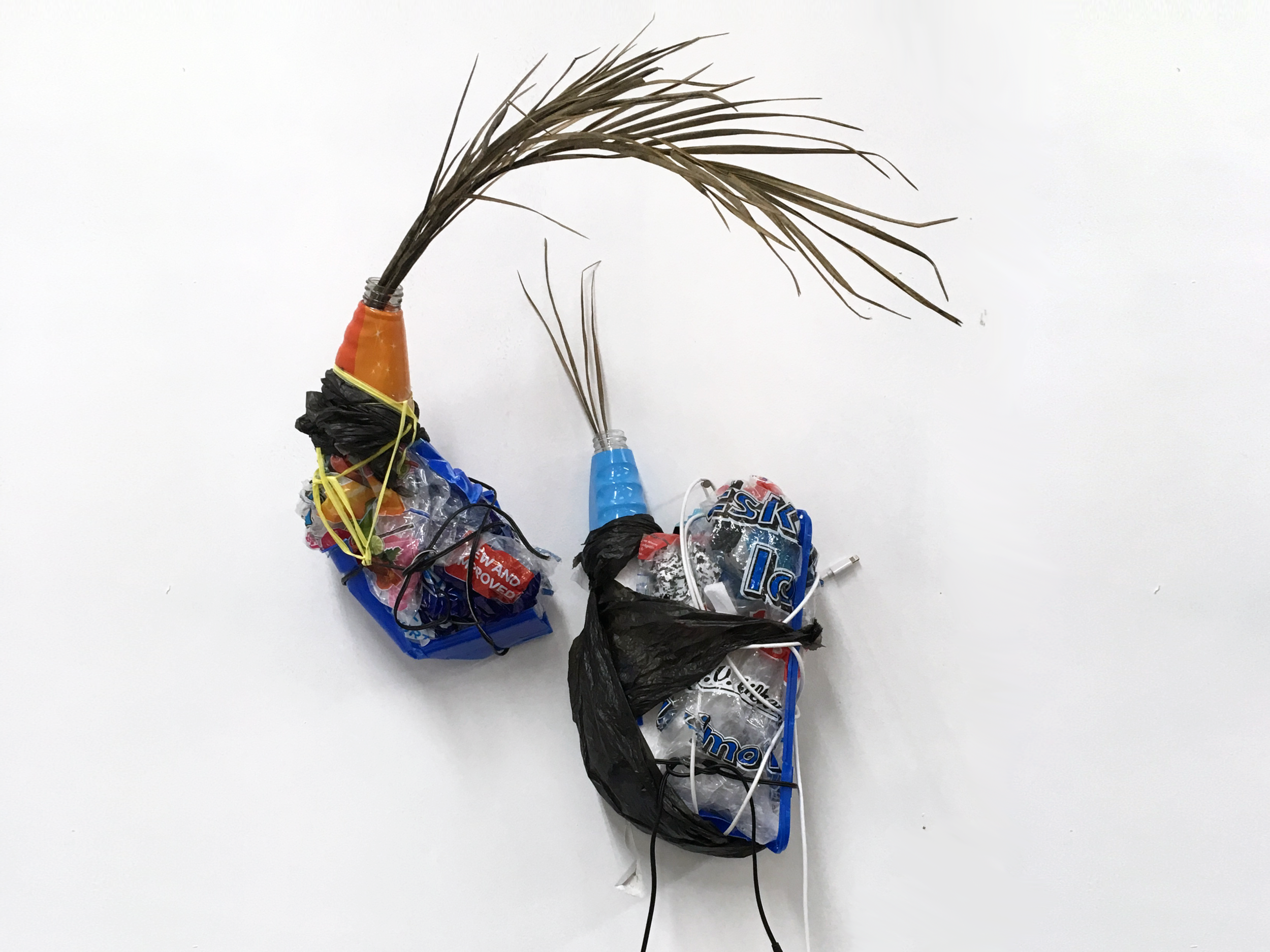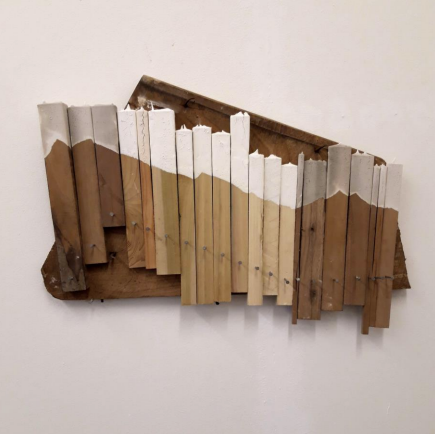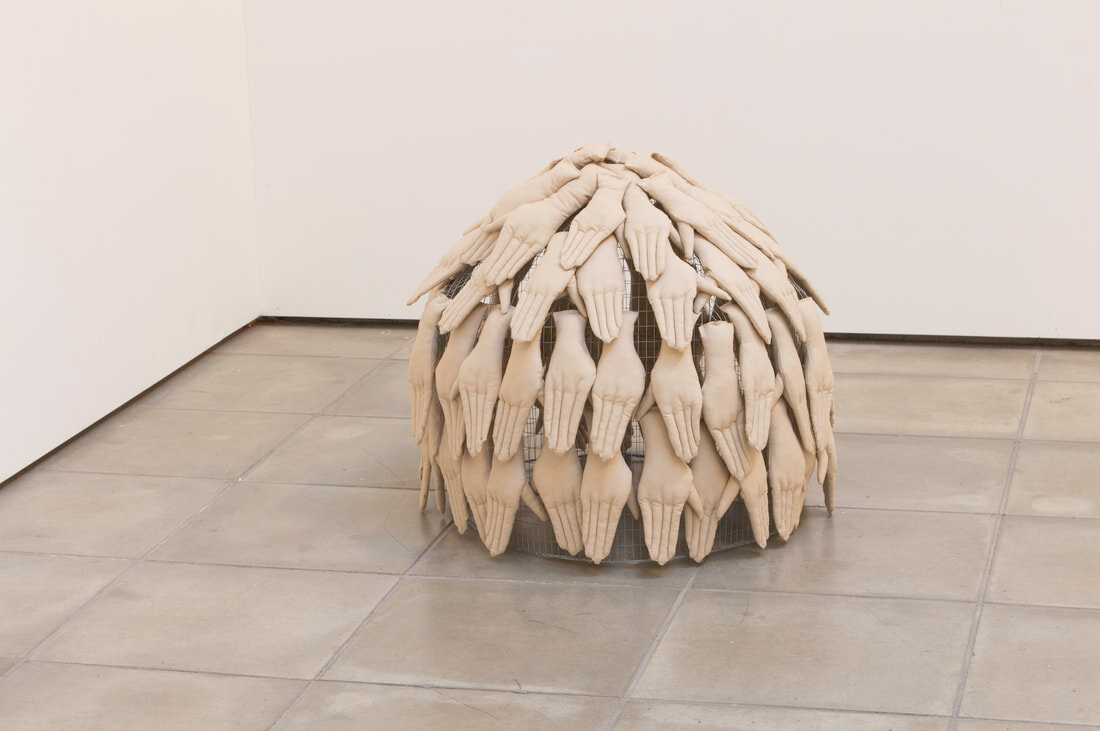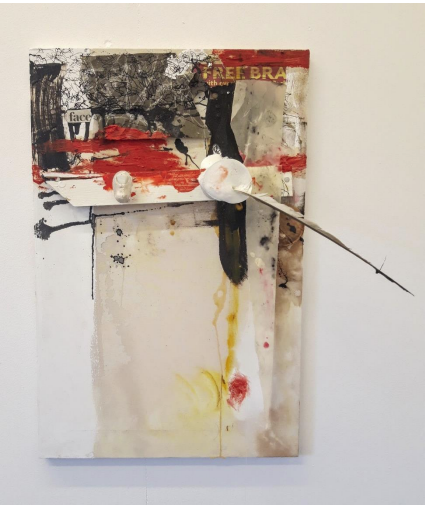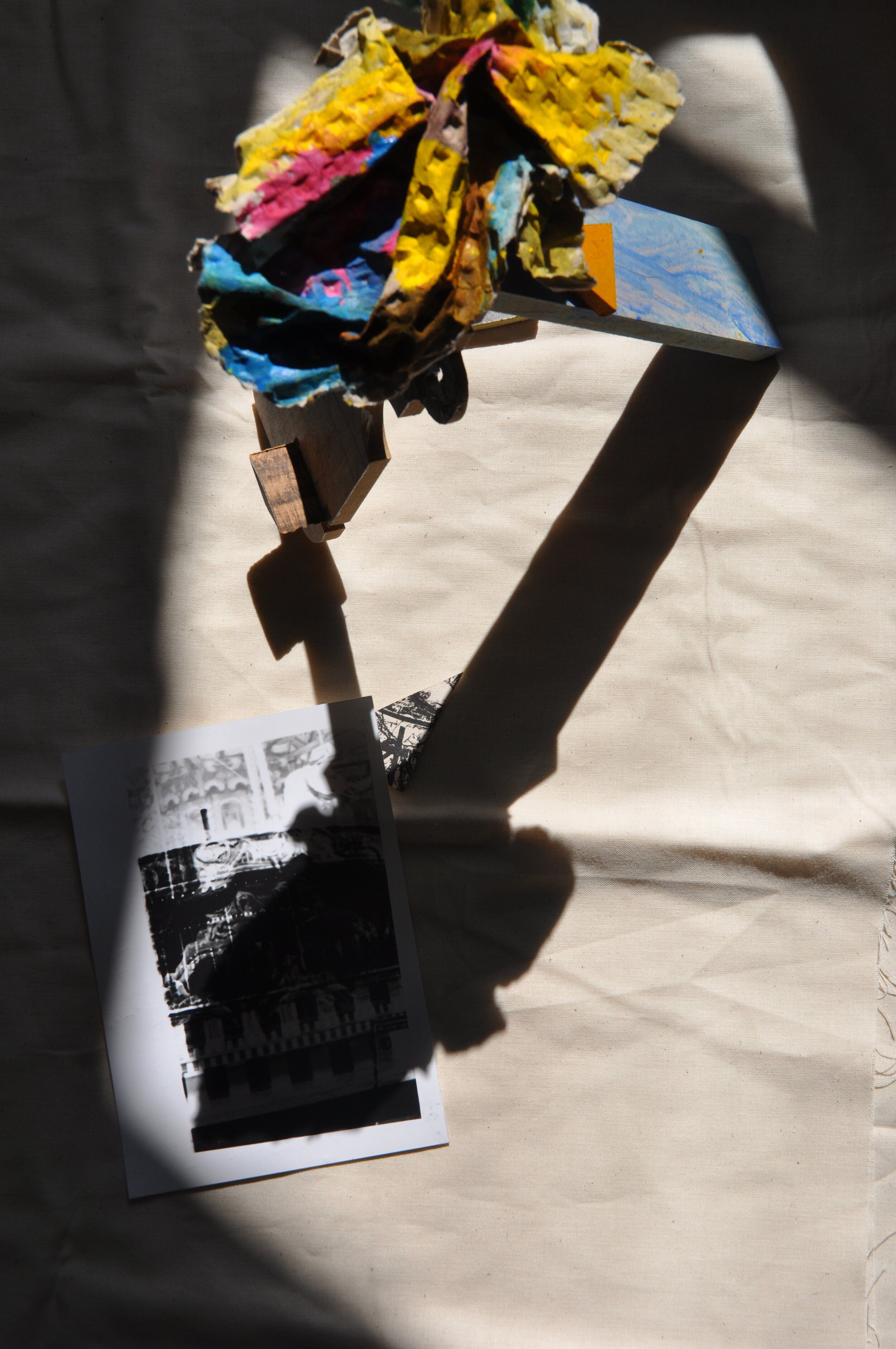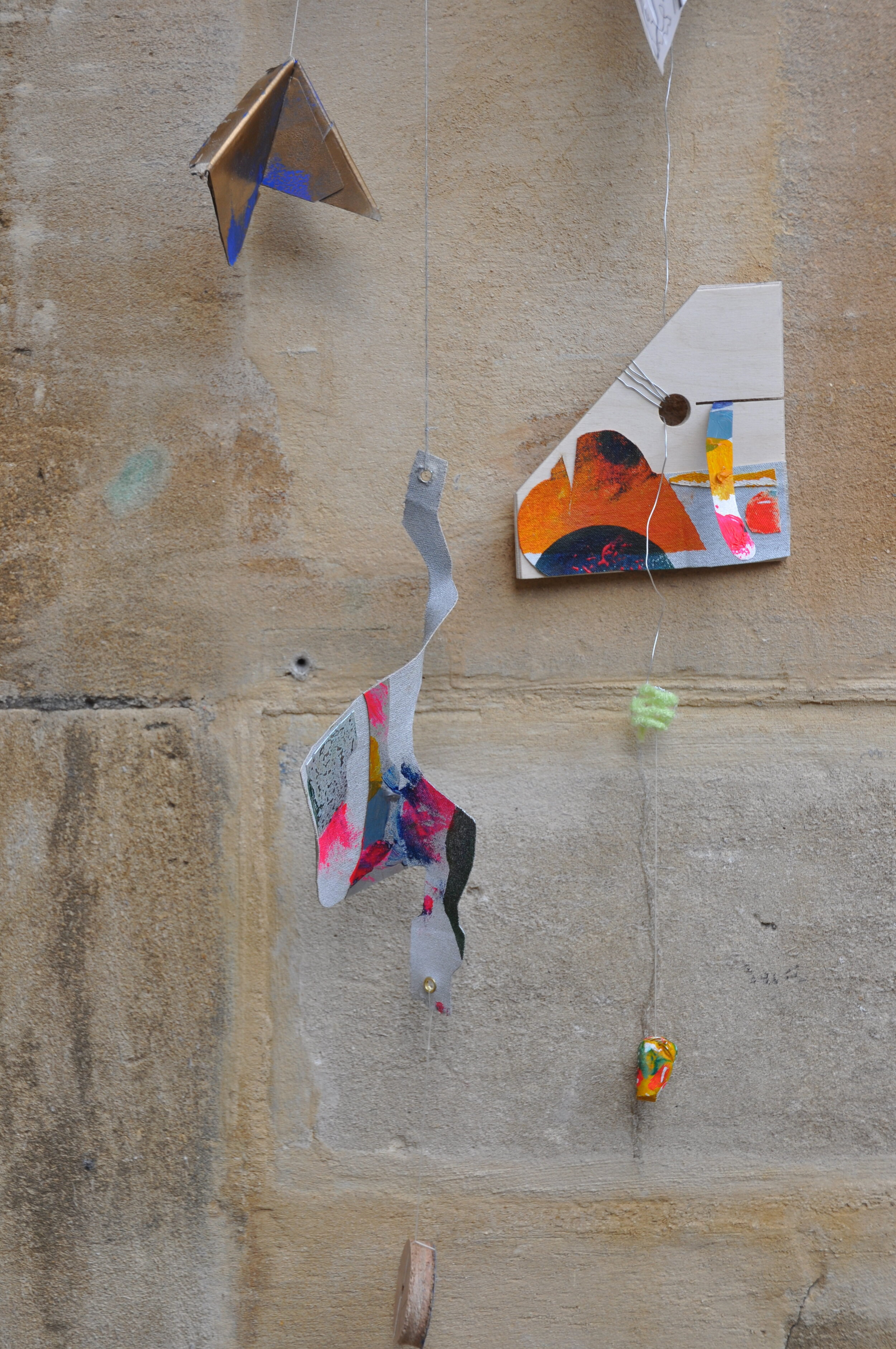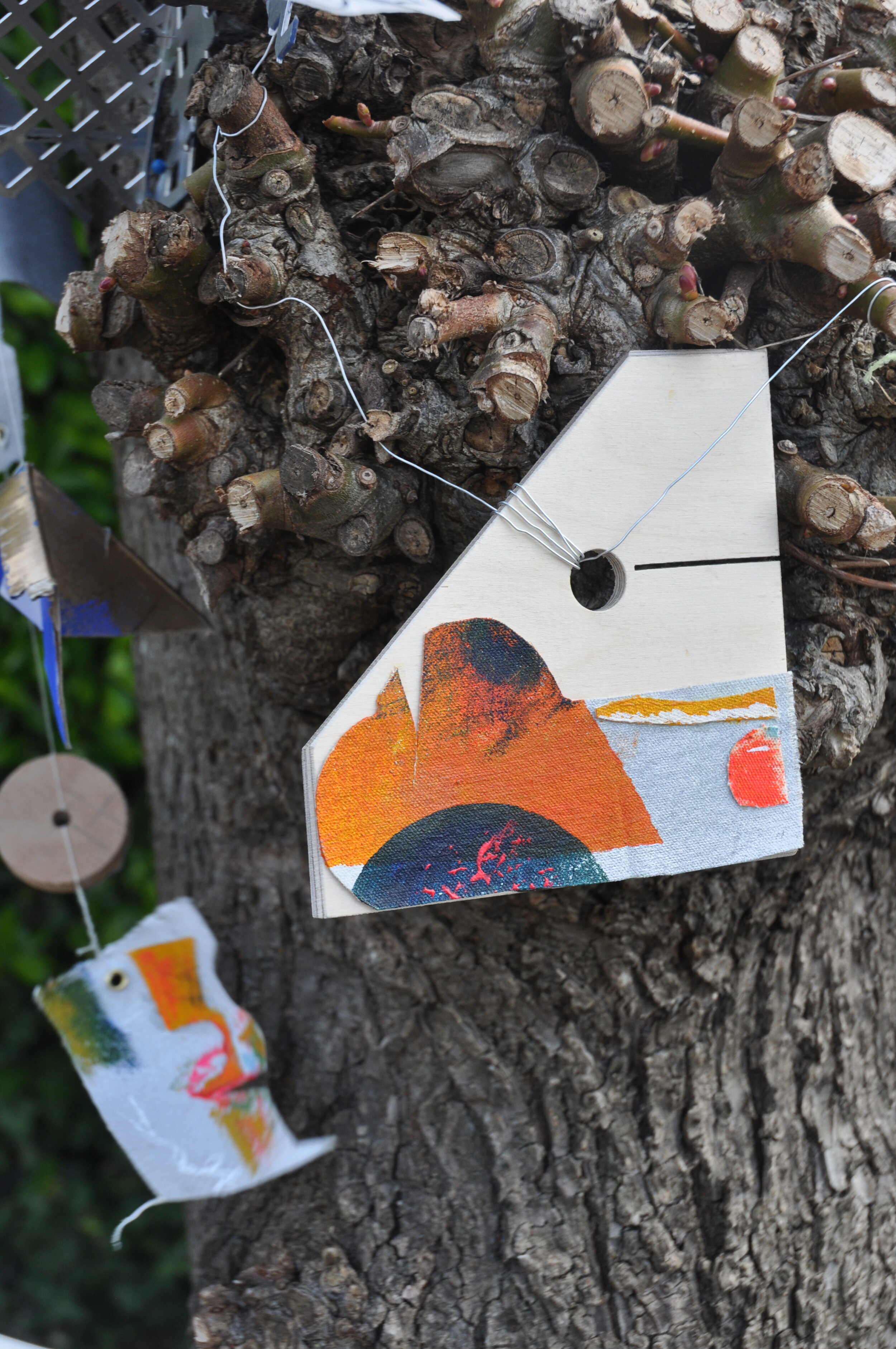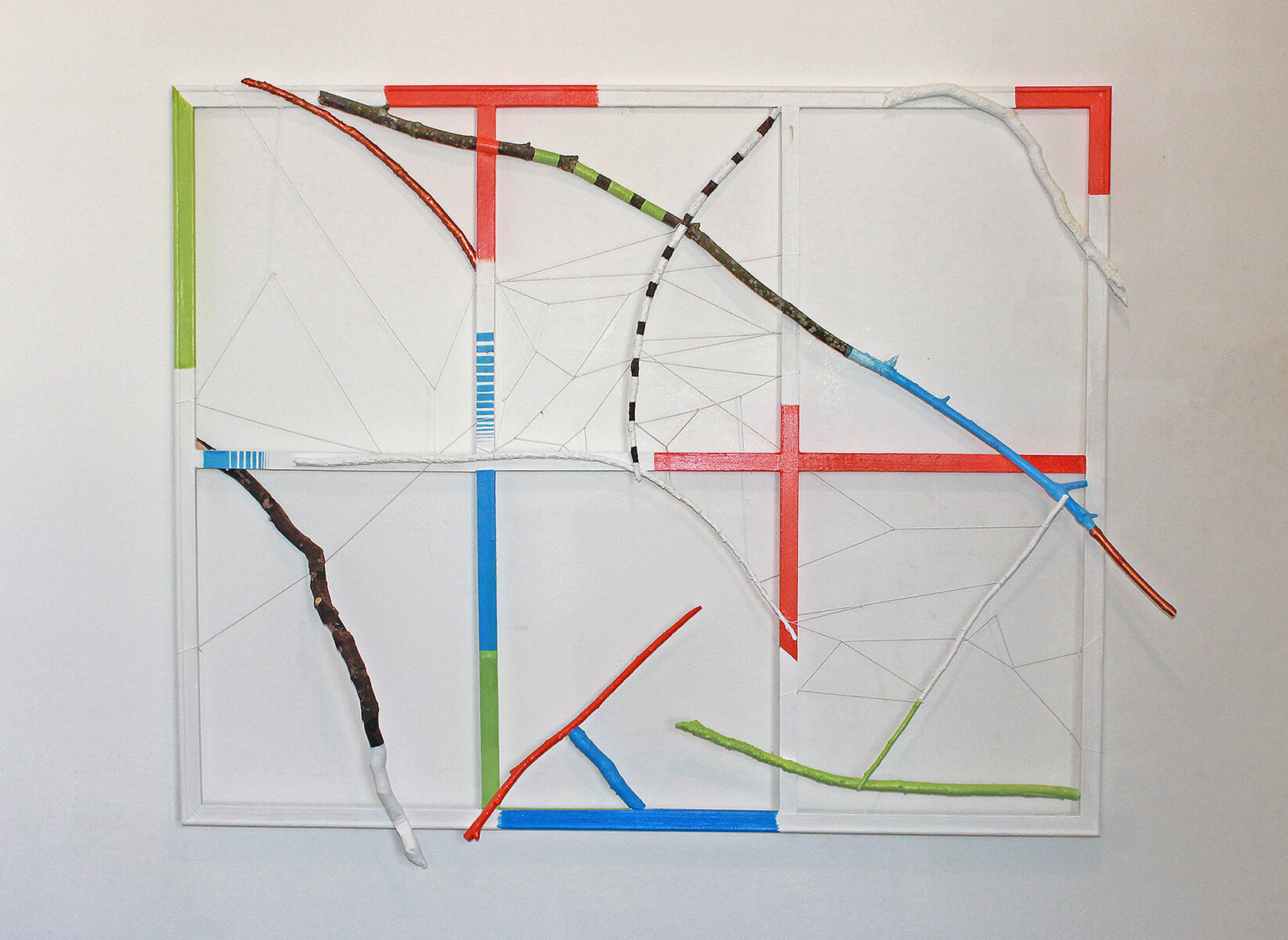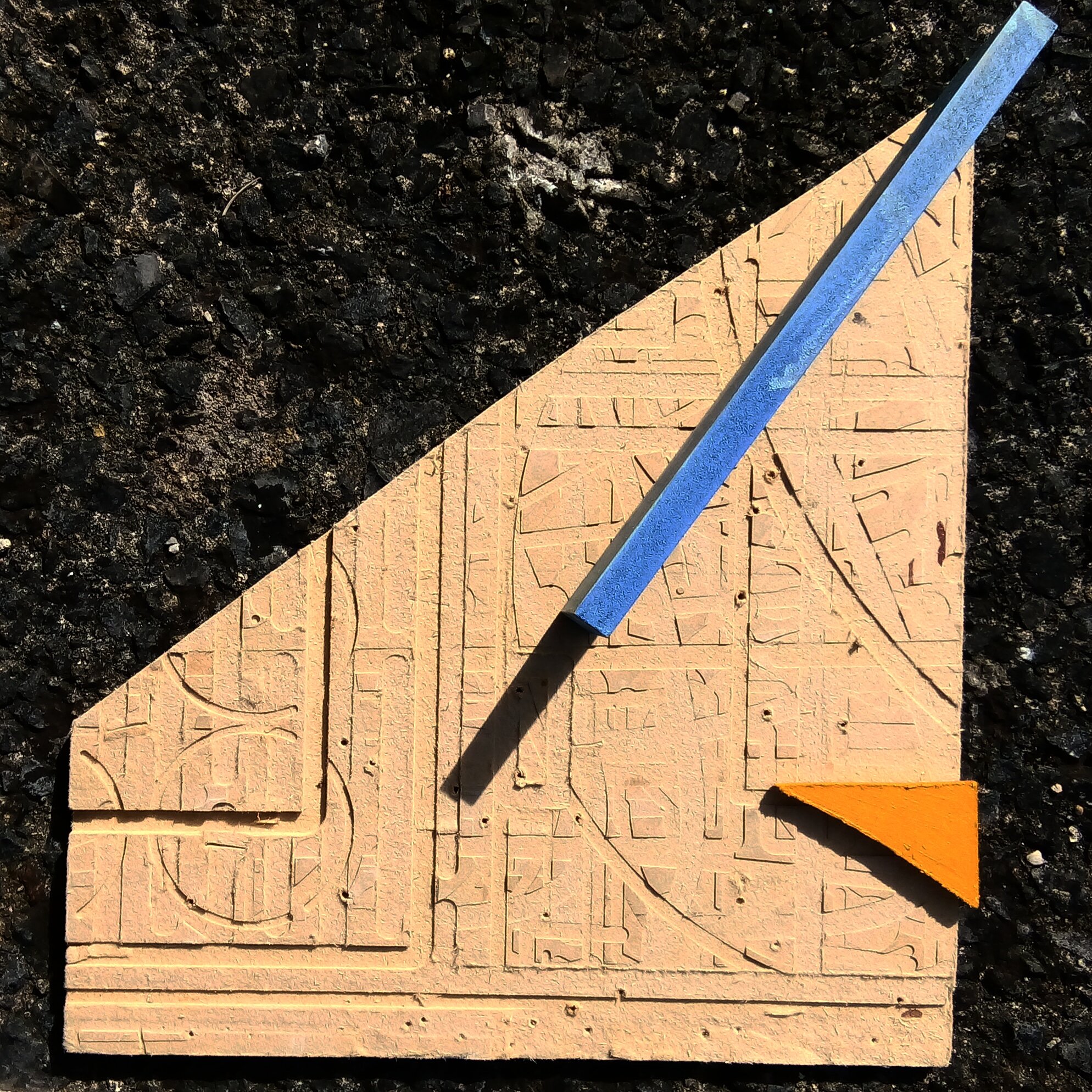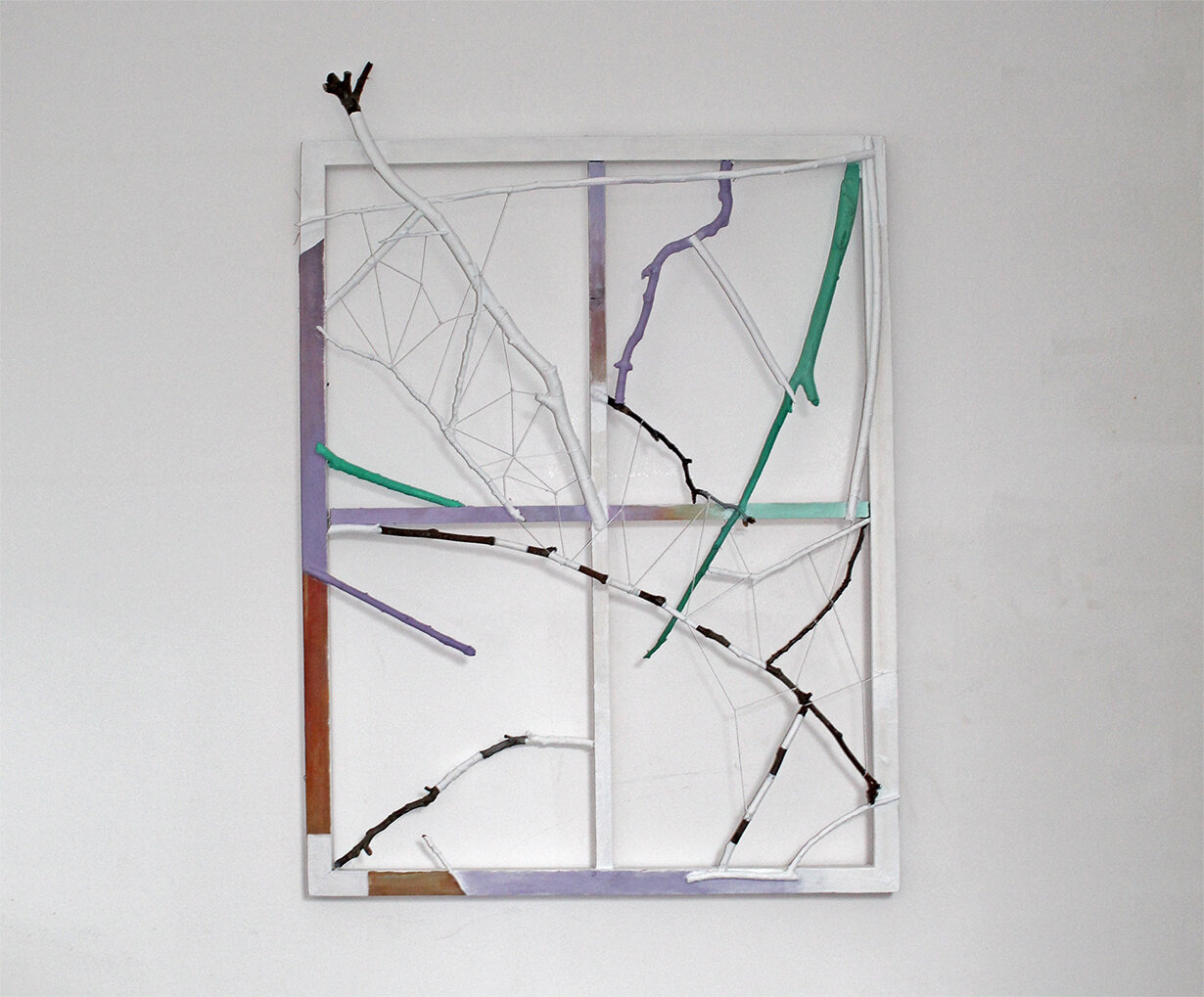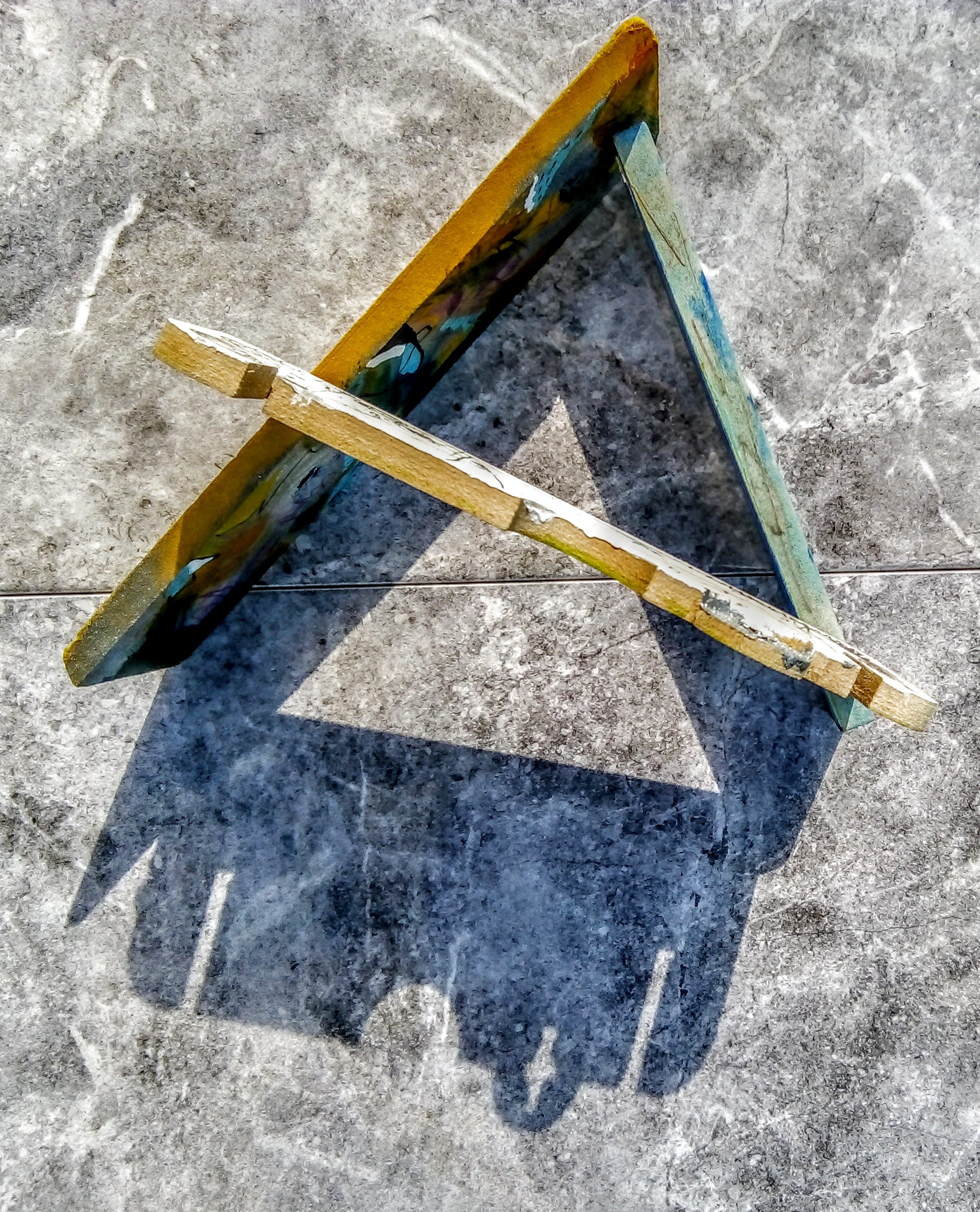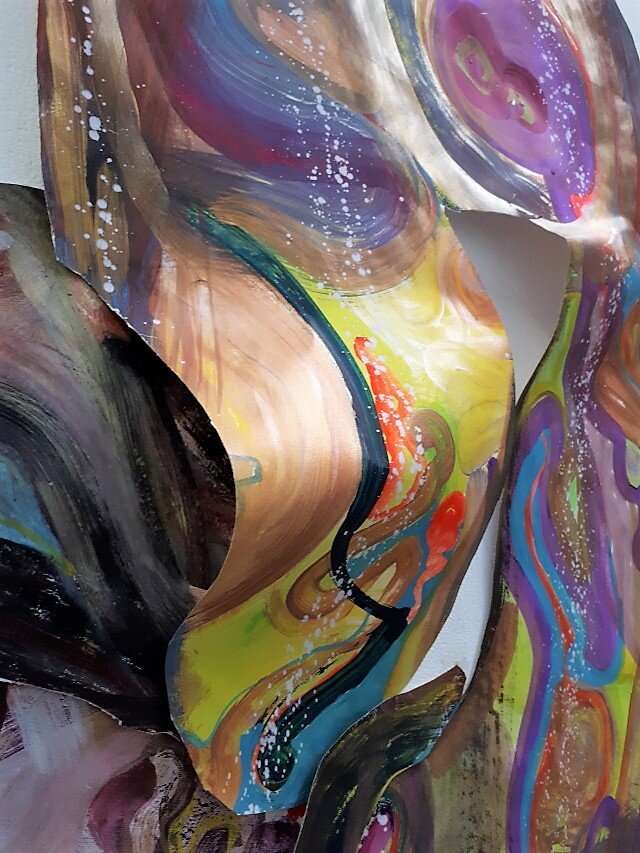Curated by Cristina Ciccone & Lisa Wooding in partnership with The I.C.E
Catalogue designed by Destroy-Design
ASSEMBLAGE
The term ‘Assemblage’ was first coined by artist Jean Dubuffet in the 1950s to describe the process of assembling materials into newly constructed forms. It is defined as art that is made by assembling disparate elements – often everyday objects – scavenged by the artist or bought specially to create a work (TATE). The artist’s obsession with collection and assemblage can be seen across the work of our selected artists.
This exhibition celebrates the work of artists who explore fluid narratives through the art of assemblage by unifying found objects and materials into partially abstract, ambiguous forms. Artists have been selected based on how their visual narratives are generated and distorted when their chosen materials combine and collide.
Assemblage artists collect and merge pre-existing materials, transforming their old connotations and functions through their creative process. This vibrant and eclectic show includes a variety of art forms which involve the unification of found or pre-existing material including collage, sculpture, installation art and photography.
Bella BradfoRd
Bendy Wendy (2020) - WIP, Cardboard, paper, plastic, wood, plastic pipe, scaffold pipe. 240cm x 270cm x 120cm
Bendy Wendy sees the collection of found materials, incrementally stacked in a phallic, bending tube-like form. She moves through the space creating a curving loop structure, taking on a creature-like presence. Bendy is assembled of found materials, she works to bring together disparate elements to make a new thing. The finishing of this work will see movement – Bendy will rock when pressure points are activated on the base stage. She will also see the addition of a gloop accretion layer, highlighting her fantasy and humorous nature. Bendy Wendy challenges the conventional use of waste materials, making them almost elegant.
Bendy Wendy Maquette (2020), Cardboard, paper, plastic, wood, wire. 25cm x 40cm x 40cm (approx.)
Maquettes stand as a vast part of my practice, aiding me in visualising life-size sculptures. Although much smaller, it helped me in understanding the physics and balance needed to make Bendy Wendy stand free from supports. Material to viewer ratio was also something I developed after making this maquette – accepting that the scaled-up version would need much thicker layers. Bendy Wendy Maquette encapsulates assemblage through the combination of multiple layers; creating a repetitive, textured body-like form, suggesting her creature-like qualities. The materials come together to make a brand-new surface, unifying the objects into an abstract, unseen combination.
Ally McGinn
“Who are you?" said the Caterpillar [2020] Mixed Media 60 x 40 x 4 cm
Objects, and therefore assemblages, are at the heart of my practice. I am an object artist who identifies as a painter exploring the subject of painting. I collect objects from the periphery of the painting process which are then brought back into the conversation extending their definition, expanding their potentiality, invoking their context, and asking us to judge again.
‘"Who are you?" said the Caterpillar’ began as a material exploration of the supportive quialities of canvas and became a piece exploring the interaction and effect of objects on each other.
‘ Adventure In Blue’
The title is a line from Alice in Wonderland and is a reference to identity and that the depth of objects is primarily defined by our level of interaction with them. This piece invites the audience to look closer at the things we discard and our definition of painting to venture down the rabbit hole.
Art is a place where the context of found objects can shift. I use this transformation to create works that invoke painting while remaining separate from it. Forming a narrative of identities and subjects within each grouping. ‘ Adventure In Blue’ (left) is an unvoiced narrative. A translation of an event spoken without words. The details of the event are undisclosed creating an ambiguous record of a moment.
Ben Hartley
Vase No.1 (2020) waste plastics, electrical wiring, dried palm frond
Vase No.2 (2020) waste plastics, USB cable, electrical wiring, dried palm fronds
These two works are part of a larger series of sculptural works produced from waste plastics and found materials, and a wider exploration of the archaeological legacy of the anthropocene; the materials and forms that might be left once humans have vanished from the Earth. The vase works bring together synthetic and natural materials that have hugely disproportionate life spans, the improvised vases made from waste plastics fastened together will outlive its contents, the dried palm fronds by millennia. The production of these works involve actions such as tying, fastening, folding, and moulding which are central to my assemblage process, producing temporary sculptural forms with elements that are perpetually reused producing temporary unions of matter.
My practice centres around sustainability in contemporary art, aware of the impact the art world has on the environment, and it’s obsession with “perfection”. Ultimately, I view perfection as an inherently unsustainable trait of human society, and identify the rejection of which, both in art and in material culture in general, as a radical act.
Hannah Fry &
SARAH KNIVETON
‘Painting The Object was the Highlight’
We wanted to work collaboratively to cope with the changes we knew we would be forced to endure in the coming weeks. We started by finding enjoyment in found and recycled material and so we began to exchange these objects daily by leaving them on the garden wall. These materials along with written instructions became fragments of ideas that we then carefully assembled and precariously balanced. The anticipation of 'the bag on the garden wall' was not only a distraction but it kept our creativity alive and when rules began to tighten we sent instructions by means of video.
Tony Bowen
"Pelham Rise, Peacehaven - Convergence” (Photographic Print)
"George Street, East Croydon - Eden (Real Estate)" (Photographic Print)
This project: ”Scratch - Urban Palimpsests” examines naturally occurring assemblages, in the form of found glass surfaces in various locations, usually street furniture such as phone boxes and bus shelters. Over time, various narratives emerge on these surfaces, combining natural material (detritus, moisture, weathering) with deliberate interventions (scratching, scoring, depositing, smearing, sticking). Gradually, new elements arrive and coexist - often briefly - leaving an echo of what each space has witnessed. It is rarely clear how or why they emerged, but these raw, ambiguous, layered ghosts reveal a particular calligraphy and trigger a sense of forensic curiosity.
Whilst usually the residues of illegal acts of vandalism, touching traces of 'being human' can sometimes be found: a cathartic or intimate declaration, a personal message, an affection, a proposition, a confession, a playful moment; (or by contrast) an expression of loss or jealousy, a violent outburst, a retraction, a corrosive attack with fire or acid, an abrasion, an incoherent gesture akin to primal automatism. Elsewhere, chance and accident offer unintended juxtapositions, interpretations and potential narratives. These fragments are framed within atmospheric glimpses of their environments and contexts, with no intervention on location and minimal post production.
Robert Lee
“Convulsive Beauty” 2020
An assemblage of found objects and materials: timber, brass, zinc, paper, steel, string (jute), synthetic rubber and leather.
‘Made in response to Andre Breton’s first novel, published in 1928 under the title ‘Nadja’. An ‘object book’ published with photographs and neither fiction nor fact, it describes Breton’s pursuit and then abandonment of a young woman.
The ready made objects, assembled to relate to the narrative and structure of the book, in a slightly modified timber typedrawer, include: a lock-cover; the dome of a desk bell; a camera lens; leather gloves and photographs. These either show Breton, his then wife, his friends - fellow Surrealists, or reference their work.There are no known photographs of Nadja! The title ‘Convulsive Beauty’ is taken from the last sentence of the book.
Megan Pierson
The Drawing - 6ftx6ft
The definition of Assemblage is 'a collection or gathering of things' - using a collection of found rope from resource and recycling centres I knot and manipuluate fragments of ropes to create linear, three dimensional forms. The work consists of knotting and weaving ropes together to create one overall form and is suspended from the ceiling allowing the work to create free and natural shapes. My work explores the concept of drawing. What is a drawing? Can you have a three-dimensional drawing? 'The Drawing' grows across the space like a tree or plant or like a pencil mark across a page - utilising the space around it. The use of rope is in response to the fishing nets and rope found within seaside towns in North Devon, my home town. There is something very delicate and beautiful about these tangles, the layers of such vibrant colours on harbour walls, in the water and in the sand.
Mark Fearbunce
Untitled (Artscape),
hardwood stirring, sticks, white emulsion, nails, step from , dismantled staircase.(47cm x 68cm)
Untitled (Artscape) is part of an enquiry into whether art is located in the preparation and maintenance of the space used to create art. The references to stirring paint and building renovation allude to the processes of preparing the studio for art-making. Untitled (Artscape) also references Western traditions of illusion through the appearance of a continuous line that might suggest a landscape; a mountainous horizon. The in-parentheses title 'Artscape' acknowledges the subject as art-making with a hint of landscape. This is a physical assemblage of found objects, but also refers to the assembling of processes involved in art-making.
Free Bra - oil, emulsion, gloss, latex, timber, nails, waxed paper, newspaper, plaster casts, feather and teabag on canvas (approx 40x60cm)
Inspired by Robert Rauschenberg’s Combines, Free Bra is both painterly and sculptural. This deliberate blurring of traditional distinctions is echoed elsewhere too: Free Bra uses an abstract language in its mark-making and composition, but also has suggestions of something more figurative; not least in the title. Free Bra also combines found objects with cast objects and materials that might not be described as objects at all, leading to juxtapositions of the abstract and the representational, and of materiality and metaphor. Can an artwork be both representational and abstract at the same time? Can it be neither?
CRISTINA CICCONE
Window Series (2019) Tree branches, acrylic, frame.
I am fascinated with the making process and the artist’s sense of vocational fulfilment through making, collecting and assembling both natural and artificial materials. The primitive act of collecting and sourcing materials through a journey of emotionally driven discovery and personal selection collides with the orderly series of steps taken to arrange each branch into a considered, methodical form. My Window series includes a playful series of assemblage pieces consisting of an arrangement of natural and manmade tangled lines, patterns and block colours, combining the abstraction and minimalism with the sentiments of Land Art. The Window series combines a recognisable base shape taken from the home with branches sourced from Richmond Park. This combination highlights a personal disconnect I was experiencing from the natural world and represents the process of reconnection with it.
#Hybrid1
S.O.A.R -Installation
Julie Clive’s practice draws from the natural world of rocks and minerals. Sensing and glimpsing the curious nature of ‘hard to see fragments’ of the beauty unseen, leads her to paint abstract works informed by the microscopic level of our existence.
Clive aims to make her practice as sustainable as possible, recycling and reusing materials, bought materials are sustainably sourced. It is this ethos, that lead Clive to reuse painted artworks, cutting them into pieces, automatically, and reassembling them on an intuitive basis. Creating larger abstract works, that began to take ‘form’ organically. These forms, named #Hybrids, which can vary in scale, forming part of an installation.
‘Mark making and the intuitive process’ fuel Clive’s painted and collaged works, along with an underlying theme of ‘seeing the unseen, fragments of what was and what is’. Clive’s work is ambiguous with an indeterminacy in meaning. Clive’s colour aesthetic, forms a visual language, mixing muted and saturated tones, creating a visual tension.
#Hybrid2
#Hybrid1 - an intense painted response and assemblage of parts of other painted works. This is in response to environmental concerns that are more apparent daily.
#Hybrid2 – detail. Using the photograph of the rock that fuelled the process for this installation of painted, collaged work. The thread, golden, signifies hope and action to the artist. The 3D form, right of the image, creates the 2D into 3D.
“I feel this work sits timely with the world we live in. Its fragments and collaged work compliment the work of Bath Arts Fringe, its adaptable, being an assemblage, it can be taken apart and re-configured anew”. J.K.Clive
Lisa Wooding
Cadis Covers (2020) Mixed Media
The Cadis fly is an amazing maker, when still in its larval stage the caddies fly will use whatever materials are predominant in the pond in which they live to assemble an expertly constructed shell. I have used natural materials to explore the process of assemblage.
Pamela Walker
www.pamelawalker.co.uk @pamelawalker4957
My work is born of a love of the old, used, discarded and unwanted, the things which have been relegated to the dump or Charity Shop.
I work primarily with discarded magazines, books and kitsch ceramic figurines along with vintage taxidermy animals.
“Haunting Melody”, “Masked Me”, “Infinite Allegiance”….analogue collage
I create sculptural assemblage with these unwanted items, and a range of collage and mixed media artworks from the mountain of discarded paper which is thrown away on a daily basis. Within the pages of old books and vintage magazines lie a multitude of treasures. I use these precious images to comment on national and world politics, social issues and injustices along with the personal troubles, feelings and insecurities which lurk within me and need an outlet.
The three collages which I am showing deal with morality, the fluid relationship between life and death and the possibility of an enduring presence in an afterlife. I am curious about what comes after we have left this world and whether loved ones can be with us in essence even though no longer with us physically. I have not yet reached a conclusion….my work and ponderings will continue……
Frances Willoughby
A Quiet Sense of Something Lost
60 x 60cm
Resin, shells and mixed media
2017
The Failure of Pretence
79 x 60 x 60cm
Wire, mesh, fabric and stuffing
2017
Play Along
Installation
Mixed Media
2017
My practice is often autobiographical I create work through various mediums including sculpture, installation and collage. Using a psychoanalytic framework, I draw on themes such as memory, nostalgia and the Uncanny. Assemblage plays an important role in my practice. My sculptures and installations often contain an abundance of everyday found objects, I displace these familiar objects and offer a new context for the viewer to decipher. An alternative narrative is created from these contrasting materials which are intended to depict relationships, anxiety and conflict. In my most recent series of work, I have created life-sized textile sculptures which explore the fragmented body. These enlarged, distorted dolls act as puppets each playing their part in re-enacting a combination of memories and dreams.
